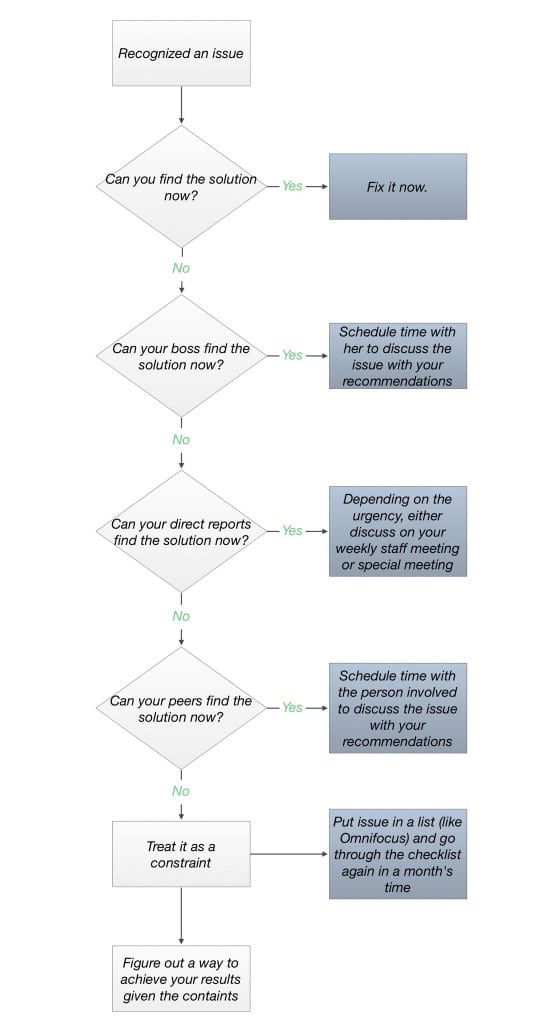A problem is an issue you can resolve while a constraint is an issue you cannot resolve. That is the simplest definition of these two terms.
You can also define it in terms of your control over the situation.
A problem is an issue where you have control over while a constraint is one where you do not have control over.
Determining which issues are considered problems and which are considered constraints is a very important topic.
That is the focus of this post. Below is a one-minute decision tree to consider where to categorize the issues you face and what to do with them.
Here’s a simple example before we get to the details. Not meeting a deadline is a problem. City traffic is a constraint.
The 1-Minute Life Hack on Determining Whether an Issue Is a Problem or a Constraint
We are all busy. Adding more steps to making a decision should not add more time nor take away from what you should be doing.
Click on the image to download a high-resolution file.
The Decision Tree
- Recognized an issue
- Can you find the solution now?
- Can your boss find the solution now?
- Can your direct reports find the solution now?
- Can your peers find the solution now?
- Treat it as a constraint

Rationale Behind the Decision Tree
Some people just take so long to decide. They keep worrying about a lot of factors that are irrelevant to the issue at hand. The main reason behind the decision tree is to keep in mind the context at which the issue was presented — at work.
Again, regardless if it is your own business or you are working in a company, you have to remember that you are there for a purpose.
You are paid to produce results.
You are not paid to think, nor show up, nor do email all day, nor attend endless meetings.
If your time is not spent on activities that contribute to results that your organization cares about, then you are wasting corporate resources. That is inefficiency at its best.
Don’t Forget Your Job
This is the most important part of this post. Don’t forget your job in this whole process.
Look, if your job is to bring in sales and meet quotas and after using the decision tree above you realized that the product you are selling is not really good (a constraint because you, your boss and your peers cannot do anything about it now), you cannot argue that the reason why you did not reach your quota is because the product is not good.
Your job is to bring in sales and meet your quotas. Period.
Stop blaming things that are out of your control. You’d only look like someone who whines and complains. Or worse, someone who cannot get the job done.
Let’s take an example from math. Back in primary school, you were introduced to algebra and the famous “solve for X” problems.
How the problem works is that you are given some assumptions to work with. For example,
Solve for X
Let Y = 3X + Y = 15
What do you do next? You factor in the given (Y) and substitute the value (3) then transpose it to the other side. Perform the subtraction (15-3) and you get X = 12.
To solve the problem, you work with the given to arrive at the end goal. The variable Y is the constraint. You work around it to reach your end goal — meet your quota.
If it is a problem, then this should not be an issue because if you indeed classified it as a problem, then you can work at finding the solution until it does not become a problem anymore. It is simply removed from the equation.
Let’s make life easy.
Apply this simple life-hack and you will find yourself working and worrying less about things you cannot control and more time working on those you can so you bring in the results required from you.
1 thought on “Know the Difference Between a Problem and a Constraint”
Such a valuable and meaningful article. Thanks a lot🙏🏼